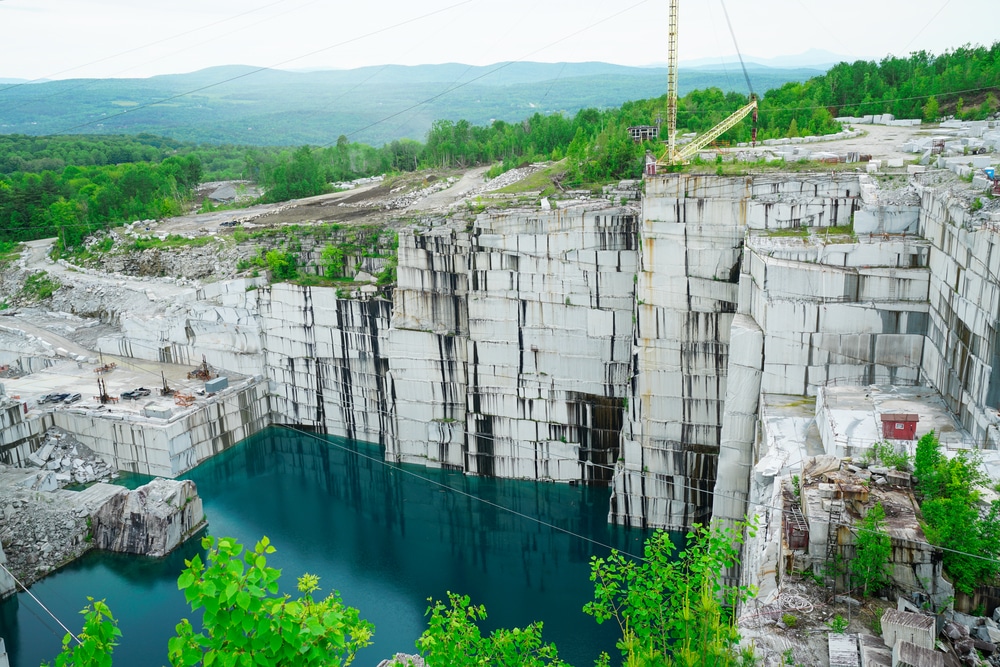Unearthing the Rich Background and Lasting Practices of Granite Quarrying
As we base on the precipice of revealing the detailed tapestry of granite quarrying, a trip via time discloses not just the physical act of drawing out rock yet also the cultural and historic importance woven right into the extremely fabric of this method. From the old beginnings that laid the foundation for contemporary quarrying techniques to the lasting methods that are shaping the future of this industry, each sculpt mark on granite surfaces tells a story waiting to be uncovered (granite quarries in south africa). The heritage of granite quarrying extends much past simple extraction; it is a testament to human ingenuity, resilience, and the enduring appeal of this stunning rock
Old Origins of Granite Quarrying
Dating back to ancient people, the practice of quarrying granite has actually been an essential component of human background and building improvement. The earliest proof of granite quarrying dates back to old Egypt, where massive pyramids and detailed sculptures were crafted from this sturdy stone. The Egyptians made use of primitive tools to extract granite blocks from quarries, showcasing the relevance of this product in their significant building and constructions.
Relocating forward in background, the Greeks also made considerable payments to the quarrying of granite. The Greeks utilized granite in different architectural wonders, such as holy places and statues, showing their ability in shaping and sculpting this sturdy stone. The Romans additionally fine-tuned the strategies of quarrying granite, employing innovative devices like chisels and hammers to remove and form granite for their legendary frameworks.
Via the centuries, the technique of quarrying granite has actually advanced, with modern technologies enhancing effectiveness while preserving the classic charm of this all-natural rock - granite quarries in south africa. From old civilizations to modern builders, the tradition of granite quarrying proceeds to shape our globe
Advancement of Quarrying Techniques
The evolution of quarrying methods has actually been marked by a continual development in the direction of better efficiency and precision in removing granite. From the simple methods used by our forefathers to the sophisticated modern technologies made use of in modern-day quarrying operations, the industry has actually undergone significant improvements. Early quarrying strategies entailed manual work with standard tools such as chisels, hammers, and wedges to draw out granite blocks from the earth. As civilizations proceeded, strategies like fire-setting and primitive dynamites were introduced to promote the extraction procedure.
In even more recent times, the introduction of machinery reinvented the quarrying sector, allowing faster removal prices and boosted performance. Technologies such as diamond cord saws, high-pressure water jets, and pneumatic drills have become common in modern quarries, permitting accurate cutting and lowered waste. In addition, improvements in computer-controlled tools and 3D modeling have actually optimized quarrying operations, causing marginal environmental impact and enhanced sustainability methods. As the demand for granite continues to increase, the development of quarrying strategies continues to be important to conference sector requires successfully and sustainably.
Social Value of Granite
Granite holds an extensive cultural relevance throughout different worlds due to its enduring presence in architectural work of arts and prized monoliths. From the majestic pyramids of Egypt to the detailed makings of the Angkor Wat temple in Cambodia, granite has been a product of choice for revealing grandeur and durability in social heritage. In old Rome, granite columns embellished temples view website and public structures, signifying stamina and permanence. The social value of granite prolongs beyond its physical qualities; it embodies resilience, security, and timelessness, making it a symbol of sustaining traditions and traditions.

Sustainable Practices in Quarrying
In the middle of the rich history of granite quarrying and its social value exists an expanding emphasis on lasting techniques within the market. As ecological recognition and issues about resource depletion have actually increased worldwide, the quarrying sector has actually significantly accepted sustainable approaches to lessen its effect on the his response setting and bordering neighborhoods.

Furthermore, improvement and recovery of quarry sites post-extraction are integral to sustainable practices. By restoring quarried locations to an all-natural or useful state, such as developing wild animals habitats or leisure spaces, quarriers can offset the environmental impact of their operations and add favorably to the regional environment.
Tradition of Granite Quarrying
With a historical backdrop steeped in workmanship and commercial progress, what enduring influence has granite quarrying left on the landscape of modern-day culture? The heritage of granite quarrying transcends mere removal methods; it has shaped building marvels, city landscapes, and cultural heritage worldwide. The resilient nature of granite has made it a recommended choice for monoliths, buildings, and framework, standing as a testimony to the skill and creativity of quarry workers throughout generations.
Additionally, the economic impact of granite quarrying can not be neglected. The market proceeds to give employment possibility and drive regional economic climates in regions where granite removal is widespread. It has additionally spurred technological advancements in quarrying strategies and devices, resulting in more reliable and sustainable techniques.
In regards to sustainability, the legacy of granite quarrying consists of he has a good point initiatives to mitigate ecological effects via reclamation jobs and liable source administration. By stabilizing economic rate of interests with ecological stewardship, the sector strives to make sure that future generations can proceed to take advantage of this enduring natural deposit.
Conclusion
